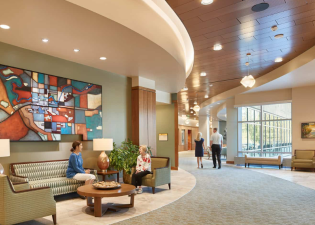With the surge in the number of elderly people around the world, the extension of the elderly period, the diversification of the elderly's needs, and the relative weakening of the family's elderly care function, countries around the world are actively responding, trying, working hard and exploring how to better provide elderly care services.

Evolution of elderly care services
The rise of centralized elderly care services is mainly reflected in the period from World War II to the 1960s, when Western countries established large elderly welfare institutions through government funding to provide centralized elderly care services. Although this approach was well-intentioned, it brought economic and social burdens as the aging population intensified.
The transformation of social elderly care functions occurred in the 1970s, when developed countries adjusted policies and expanded social elderly care functions, which promoted the vigorous development of the elderly care industry and formed a diversified elderly care service system with its own characteristics.
Retirement communities
Retirement communities provide diverse living options to meet the diverse needs of the elderly. In the United States, "retirement communities" were specially established to meet the living needs of the elderly. These communities are usually located in southern states with abundant sunshine, pleasant climate and relatively low prices, such as Florida, New Mexico, Arizona and Nevada. Among them, the "Sunshine City" in Arizona is even more famous.
Sun City is a census-designated, unincorporated community located in the Phoenix metropolitan area. Construction began in 1960, and after 59 years of development and growth, it has become a multicultural retirement community. To ensure a quality of life for seniors, Sun City has established strict residency regulations: all residents must be at least 55 years old, and no accompanying persons under the age of 18 are allowed to reside permanently.

Technology Aids the Elderly
In addition, the emergence of robotics has brought new solutions to the elderly care industry. These AI-powered robots not only provide companionship for elderly patients but also remind them to take their medications on time. They play a vital role in elderly care facilities and hospitals, helping them achieve more services with less cost.
New Ways to Live in Retirement
Volunteering and Part-Time Work Opportunities
In retirement, many people continue to participate in social activities, contributing to society through volunteering and part-time work. Volunteering has become an important way for retirees to contribute to their communities, actively participating in local charities and organizations. At the same time, many find part-time work opportunities to meet their needs for both financial and physical well-being. Social Functions and
Activities in Retirement Communities
American retirement communities place great emphasis on meeting the social needs of seniors. By hosting a variety of cultural and recreational activities, they enable seniors to actively enjoy life. These activities not only enhance the quality of life for seniors but also provide strong support for their physical and mental health. Retirement communities meet the social needs of seniors through a variety of cultural and recreational activities, enhancing their quality of life. These activities not only alleviate loneliness but also promote their physical and mental well-being.



